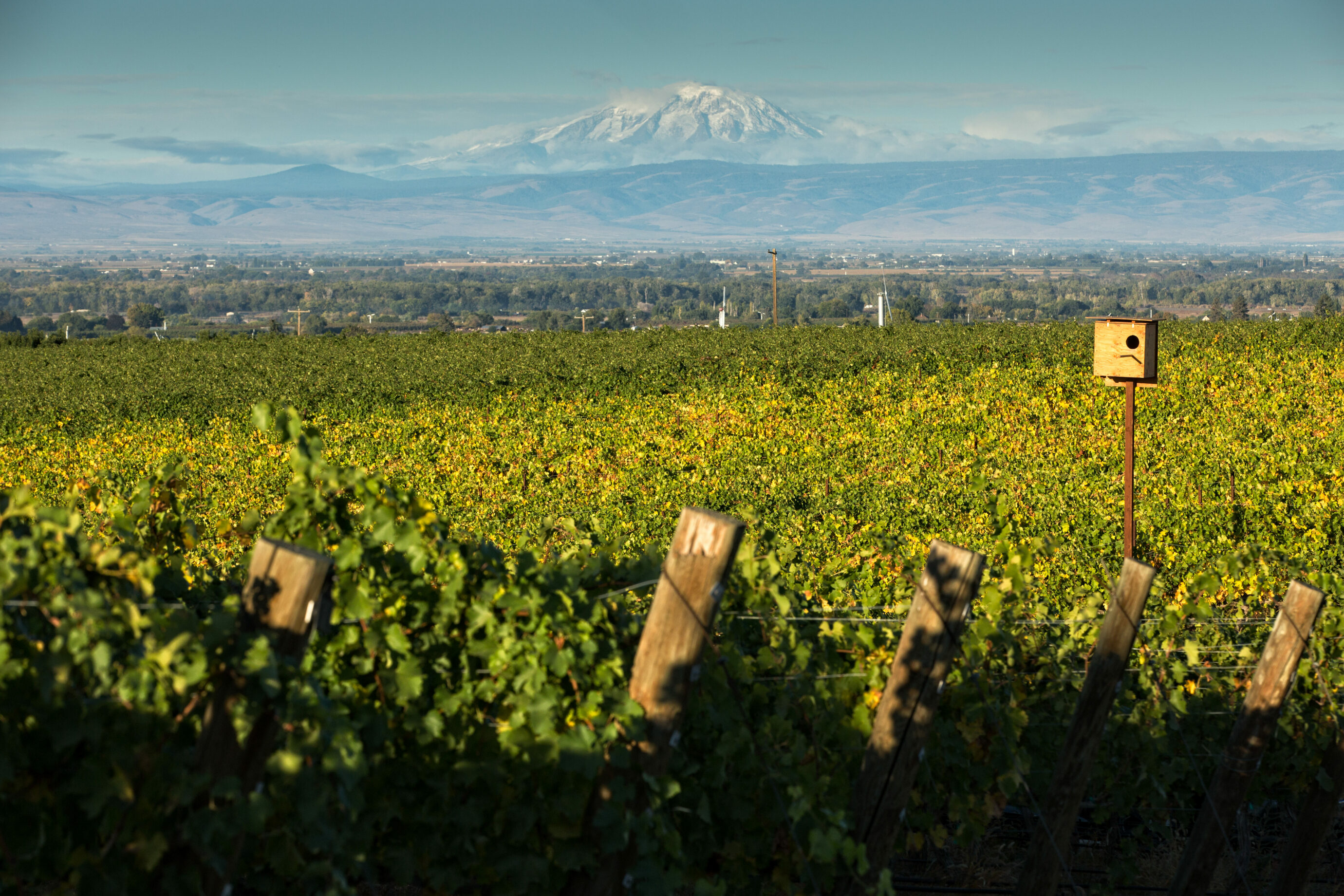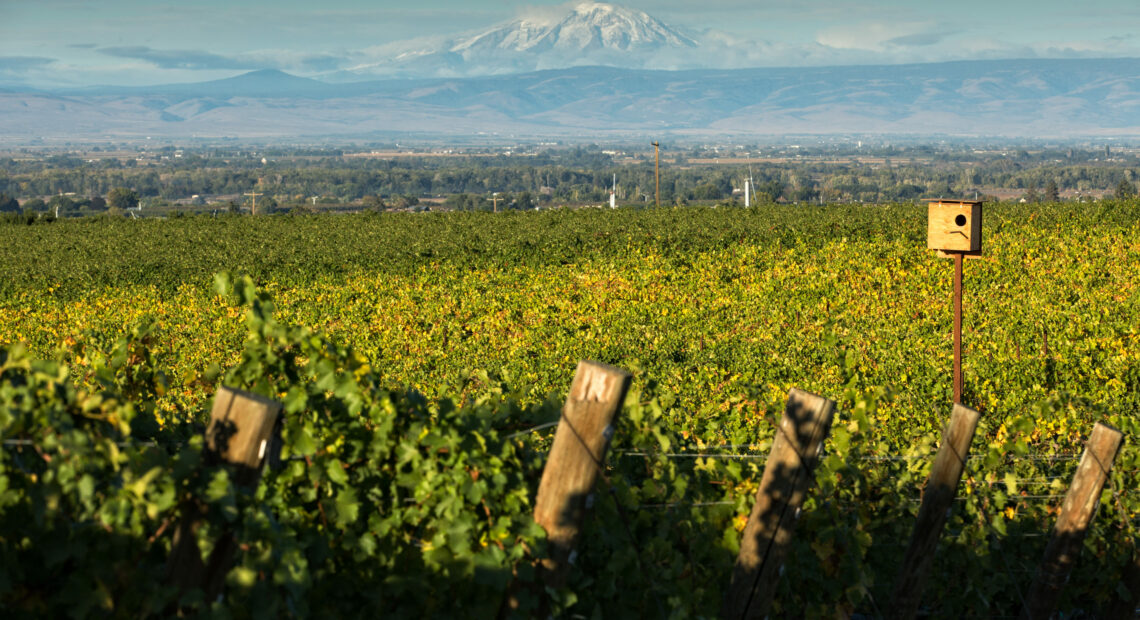
First Washington wines made from sustainably grown grapes to hit stores this spring
Listen
(Runtime :57)
Read
Growers have harvested the first grapes under Washington’s new sustainability program, and wines with the new “Sustainable WA” label should hit store shelves this spring.
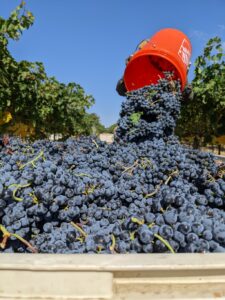
A wine grape harvest at Two Mountain Winery in Zillah, Wash., south of Yakima. Credit: Two Mountain Winery
“We have had very long-term dedicated consumers of Washington wine that have expressed an interest in sustainability, and in all of agriculture, but certainly in the wines that they drink,” said Vicky Scharlau, executive director of the Washington Winegrowers Association.
To earn the label, grape growers must commit to sustainable vineyard practices, like using water efficiently and pruning grapevines to prevent disease. Or buying grapevines from an established plant laboratory to ensure the vines are tested for viruses, instead of just planting grapevines from a neighbor.
Participants must pass a third-party audit to meet the new standards. The first test of the program was done over the summer.
“We did the beta growers as the test, if you will, the first round, to make sure we had all the kinks worked out. And now this fall, we had 16 growers that actually went through the formal process,” said Sharlau.
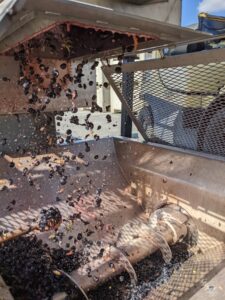
One of the first steps in harvesting grapes is separating the fruit from the stem. Credit: Two Mountain Winery
Patrick Rawn of Two Mountain Winery in Zillah, Wash., went through the new program. He manages vineyard operations, while his brother, Matthew, handles the wine production. Patrick Rawn said one of the keys to the program is incremental improvement over time, which helps the vineyard’s resiliency.
“Forcing yourself to keep the records for the programs allows for annual measurement and benchmark improvement. Our sustainability journey has had a really positive impact on our business for these reasons,” he said.
Growers have to gather a lot of information about their growing process to fill out the self-assessment, which auditors then review. Approved wineries can stick the new label on the bottle.
Patrick Rawn said Two Mountain Winery will release its new 2022 riesling, sauvignon blanc and rosé in late February, and all of those wines will bear the new Sustainable WA label.
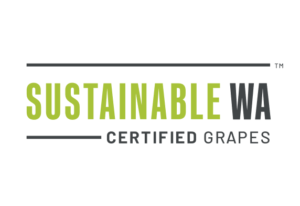
A preview of the new Sustainable WA logo. Credit: Washington Wine Commission
The program first began as a set of educational programs for grape growing and winemaking. In the program, vitners and growers can learn about business practices, marketing, pests and diseases that affect vines and grapes.
The Washington Wine Commission added the certification last summer, said Scharlau.
Adam Ramirez is a member of the Washington Wine Foundation Board. He uses market research like Nielsen to look at the trends for the industry and said consumers are asking for sustainable wines.
“It is also great in relation to the goals of the industry to be more focused on sustainability,” he said. “There are benefits to the environment and cost benefits, as well, when it comes to the conservation of resources such as water.”
The first grapes grown under the new sustainability guidelines are currently being processed into wine.
Scharlau said the standard for meeting the sustainable criteria has influence from other sustainability certifications for vineyards around the world in New York, California, Australia and New Zealand.
“It’s about being able to say, here we are; we’re Washington state; we’re sustainable. And we’ve got a third-party stamp to be able to provide a consumer that gives them confidence in that product, even more confidence than they had before,” said Scharlau.
Grape growers and winemakers interested in earning the sustainability label can apply to the program every February.

